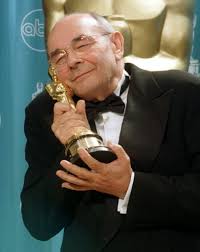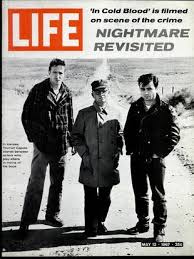If for a moment you were lucky enough to fall within her orbit, you never forgot meeting Cicely Tyson. Nearing the end of her six-decade career the actress-activist still radiated fierce pride in an admittedly curtailed career. I met Tyson twice. First, when as a novice reviewer for a Hollywood trade paper I raved about “Sounder” — without mentioning screenwriter Lonnie Elder III, the only African-American behind the camera. A rookie mistake for which I was deservedly told off in a flood of angry phone calls. Tyson called to both thank me for my kind words about her amazing, Oscar-worthy performance — and to signal an end to the orchestrated phone campaign. I made amends by interviewing Elder over lunch the next day.
I met Tyson again in 2005, when she and good friend Louise Fletcher came to San Jose for a buddy comedy.
by Glenn Lovell
Call it another sign of our troubling times —
Nowadays, even an Oscar and three Emmys don’t guarantee access to Hollywood’s inner circle, especially if you’ve committed the unpardonable sin of continuing your craft past 70.
These American treasures, both 71, took bottom dollar for a Northern California labor of love about growing old with dignity. It’s a high-def video adaptation of the play “Fat Rose and Squeaky,” named for the Fletcher character’s imaginary friends. And at $500,000, the budget didn’t allow for trailer dressing rooms, luxury suites or other star amenities.
Ask Cicely Tyson and Louise Fletcher. The star of “Sounder” and “The Autobiography of Miss Jane Pittman” and a third for “The Oldest Living Confederate Widow Tells All.”
I sat down with the actresses during a break in their (unpaid) rehearsal.
“Why did I want to do this?” began Fletcher, best known for her Nurse Ratched in “Cuckoo’s Nest.” “Because it’s a very good script and a very good role. My character, Bonnie, is 83 years old. She’s pretty broken down and on the edge of not making it … a great deal of the screenplay takes place inside her head. But mostly, it’s a story about friendship.”
For Tyson, it was the opportunity to work with Fletcher and do something meaningful. She also liked the fact that her character, a French émigré and former ballet dancer, wasn’t written with race in mind.
The size of the production? Never a factor.
“I would have done ‘Jane Pittman’ if it had been done in the basement of a church,” said Tyson, last seen in “Because of Winn-Dixie,” with a laugh. “For me, it’s always the character, and the part she plays in the scheme of things.”
And it’s just great to be working, period. In Hollywood, actresses past 40 are all but obsolete. Look what happened to Barbara Hershey and Meg Ryan, points out Fletcher. Both went the collagen route in sad attempts to improve their box-office standings.
“You know Hollywood; it’s not a very realistic place,” Fletcher said. “I notice grandmothers are about 45 now … we live in a youth-worshipping culture. When people get over a certain age they become invisible to most people.”
Added Tyson, who received an Oscar nomination for her sharecropper wife in “Sounder”: “I’ve been known as the actress who works every couple of years. When a few years go by and I don’t get a call, it’s not unusual for me.”
Is it getting better or worse?
“Better for men but not for women,” replied Tyson. “You know as a man ages, he becomes a lot more attractive to Hollywood. As a woman ages, she becomes a lot more unattractive … because youth is the absolute scale on which everything is weighed.”
“Fat Rose and Squeaky” will wrap production in mid-November. It will then be submitted to the Sundance Film Festival.
“Keep your fingers crossed that we’re as lucky with this as we were with ‘Sounder,’” said Tyson.
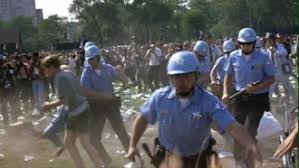







 Day 6 — Wednesday, March 18.
Day 6 — Wednesday, March 18.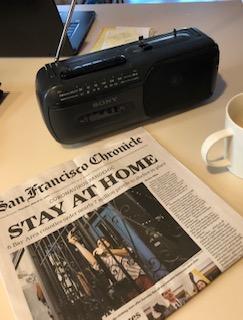 ness as usual in most quarters. Marco, our lion-size tabby, is suffering hunger pangs, the Keurig is belching steam … and the newspaper is at the end of our driveway (almost on the neighbors’ lawn). And what’s on everybody’s mind? Tom Brady, after 20 years, has made it official: he’s leaving the Patriots and angling for a new contract. Talk about bad timing? There’s something more urgent than football out there at the moment, Tom, something called a pandemic —
ness as usual in most quarters. Marco, our lion-size tabby, is suffering hunger pangs, the Keurig is belching steam … and the newspaper is at the end of our driveway (almost on the neighbors’ lawn). And what’s on everybody’s mind? Tom Brady, after 20 years, has made it official: he’s leaving the Patriots and angling for a new contract. Talk about bad timing? There’s something more urgent than football out there at the moment, Tom, something called a pandemic — nkering down,” as in stay put, wouldn’t you know it, TCM dusts off George Stevens‘ adaptation of “The Diary of Anne Frank” (1959), about two Jewish families in-hiding from the Nazis. Set almost entirely in the secret annex behind the bookcase, this musty perennial redefines stage-locked, claustrophobic. Worse, we’re shut in with doe-eyed Millie Perkins‘ as the more cloying than charming Anne and Shelley Winters as the mettlesome Mrs. Van Daan? You’d have to search long and hard for a more annoying performance by Winters, who, beginning with her “A Place in the Sun” party-pooper, specialized in whiney millstones. See Winters as Humbert’s gauche landlady, Charlotte Haze, in “Lolita,” as the former Olympian masquerading as stereotypical yenta in “The Poseidon Adventure” … or, as the rock-star president’s strung-out mater in “Wild in the Streets.”
nkering down,” as in stay put, wouldn’t you know it, TCM dusts off George Stevens‘ adaptation of “The Diary of Anne Frank” (1959), about two Jewish families in-hiding from the Nazis. Set almost entirely in the secret annex behind the bookcase, this musty perennial redefines stage-locked, claustrophobic. Worse, we’re shut in with doe-eyed Millie Perkins‘ as the more cloying than charming Anne and Shelley Winters as the mettlesome Mrs. Van Daan? You’d have to search long and hard for a more annoying performance by Winters, who, beginning with her “A Place in the Sun” party-pooper, specialized in whiney millstones. See Winters as Humbert’s gauche landlady, Charlotte Haze, in “Lolita,” as the former Olympian masquerading as stereotypical yenta in “The Poseidon Adventure” … or, as the rock-star president’s strung-out mater in “Wild in the Streets.”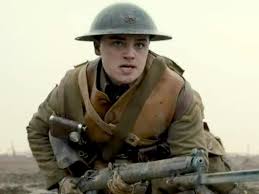 pl Blake), George MacKay (Lance Cpl Schofield), Colin Firth (Gen. Erinmore), Benedict Cumberbatch (Col. MacKenzie)
pl Blake), George MacKay (Lance Cpl Schofield), Colin Firth (Gen. Erinmore), Benedict Cumberbatch (Col. MacKenzie)

 sness.
sness. n Jones”) or a hand-to-mouth existence on the fringe, Fonda chose the latter.
n Jones”) or a hand-to-mouth existence on the fringe, Fonda chose the latter. course we’re talking about shows like “Stranger Things” and Prime’s “The Marvelous Mrs. Maisel” that take place in some bygone era and depend on cigs for period authenticity.
course we’re talking about shows like “Stranger Things” and Prime’s “The Marvelous Mrs. Maisel” that take place in some bygone era and depend on cigs for period authenticity.